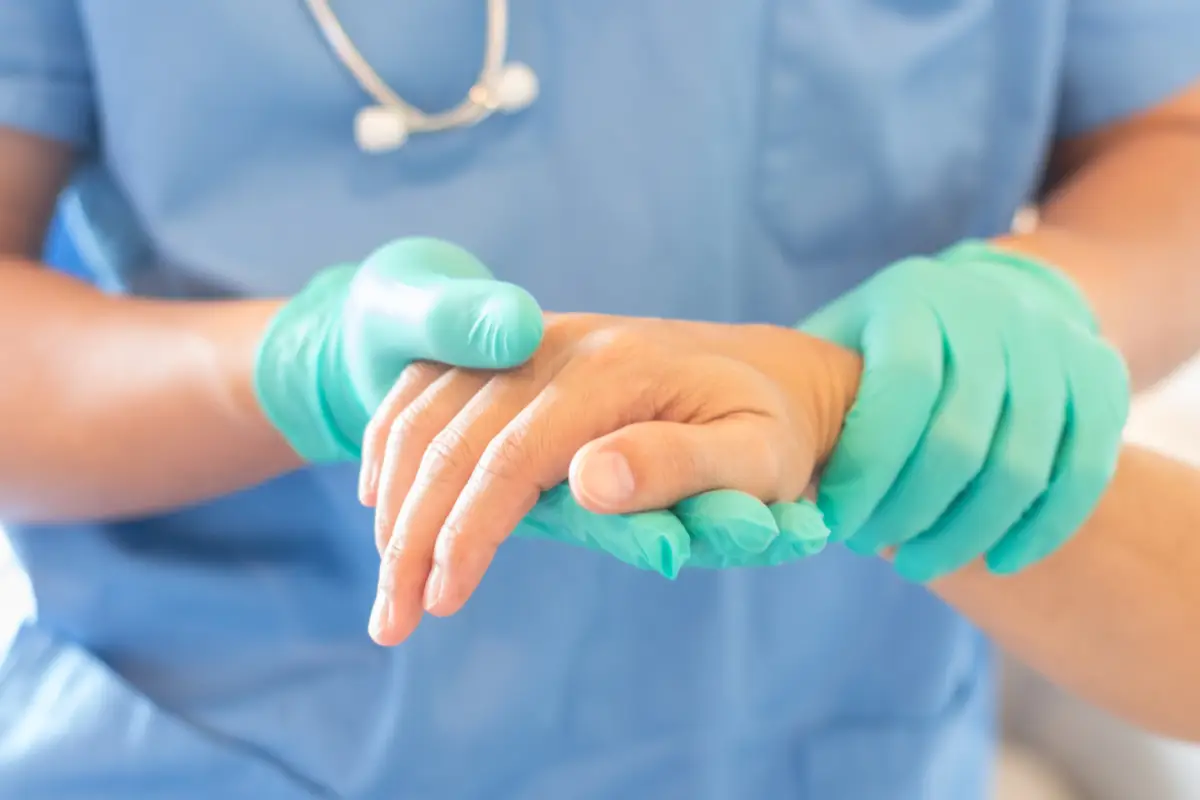We use cookies to help provide you with the best possible online experience.
By using this site, you agree that we may store and access cookies on your device. Cookie policy.
Cookie settings.
Functional Cookies
Functional Cookies are enabled by default at all times so that we can save your preferences for cookie settings and ensure site works and delivers best experience.
3rd Party Cookies
This website uses Google Analytics to collect anonymous information such as the number of visitors to the site, and the most popular pages.
Keeping this cookie enabled helps us to improve our website.

DeQuervain’s Procedure
Information & Treatment
What is De Quervain’s Syndrome?
De Quervain’s syndrome is a condition where the tendons on the thumb side of the wrist become irritated and inflamed. This causes pain, swelling, and difficulty when moving the thumb and wrist. Although not life-threatening, it can make everyday tasks such as lifting, writing, opening jars, or using a phone painful and difficult.
What Causes De Quervain’s Syndrome?
De Quervain’s occurs when the sheath (a tunnel of tissue) around the tendons of the thumb becomes tight or thickened, restricting smooth movement.
It can develop from:
- Repetitive thumb or wrist movements (e.g. lifting, gripping, twisting, texting).
- Caring for a baby (‘mother’s thumb’), often from lifting in awkward positions.
- Injury or strain to the wrist.
It is more common in women, especially between the ages of 30-50.
How is it Diagnosed?
A doctor or hand therapist will examine your wrist and thumb. The most common test involves placing your thumb across your palm, making a fist, and bending your wrist downwards. Pain on the thumb side of the wrist during this movement is a strong indicator of De Quervain’s syndrome.
What Are the Symptoms?
- Pain and swelling on the thumb side of the wrist.
- Pain that worsens with gripping, lifting, or twisting.
- Difficulty moving the thumb smoothly.
- Tenderness when pressing on the affected area.
- Sometimes a ‘snapping’ sensation when moving the thumb.
Do I Need Treatment?
Mild symptoms may improve with rest and activity changes. Treatment is usually recommended if:
- Pain persists or worsens.
- Normal hand function is affected.
- Symptoms interfere with work or daily activities.
What Are the Treatment Options?
Anti-inflammatory Medications
Tablets or gels can help reduce pain and swelling.
Splinting
A wrist/thumb splint keeps the tendons rested, reducing irritation.
Steroid Injections
A local steroid injection into the tendon sheath can provide lasting relief for many patients.
Surgery
If other treatments do not help, a minor operation may be recommended.
What Does Surgery Involve?
A De Quervain’s release is carried out as a day case under local anaesthetic. During surgery:
- A small incision is made over the wrist.
- The tight tendon sheath is carefully released, allowing the tendons to glide freely.
- The wound is closed with stitches and a dressing is applied.
Pre-Operative Preparation
- Smoking cessation: Quitting smoking reduces the risk of complications and helps healing.
- Remove all rings from your fingers before arriving at hospital.
What to Expect After Surgery
- Discomfort: Mild pain is normal and can be controlled with over-the-counter painkillers.
- Elevation: Keep your hand raised for the first 48 hours to reduce swelling.
- Dressings: The bulky bandage is removed after 48 hours, leaving a smaller dressing in place until fully healed.
- Movement: Gentle exercises are encouraged to prevent stiffness.
Post-Surgery Care
- Avoid heavy lifting or strain on the hand until advised.
- Stitches usually dissolve 10–14 days after surgery.
- Most people notice a steady improvement in pain and movement within a few weeks.
Risks and Possible Complications
While uncommon, possible risks include:
- Infection.
- Scar tenderness or sensitivity.
- Temporary stiffness.
- Numbness near the incision due to nerve irritation.
- Rarely, recurrence of symptoms.
- Very rarely, Chronic Regional Pain Syndrome (CRPS), which causes prolonged pain, swelling, and stiffness.
Follow-Up Appointments
You may not always need a routine follow-up unless advised by your consultant.
Returning to Work
- Desk-based jobs: usually within a few days.
- Light manual work: 1-2 weeks.
- Heavy manual work: several weeks off may be needed.
Discuss your individual situation with your surgeon.
